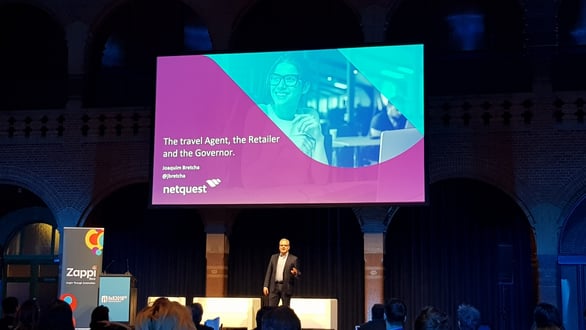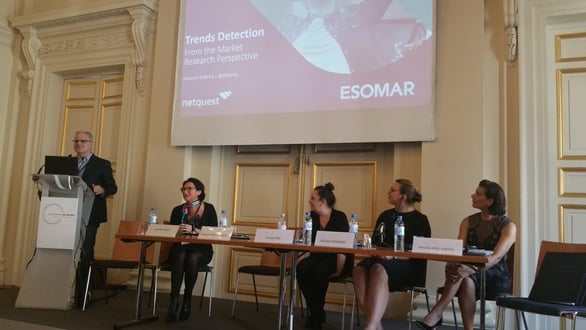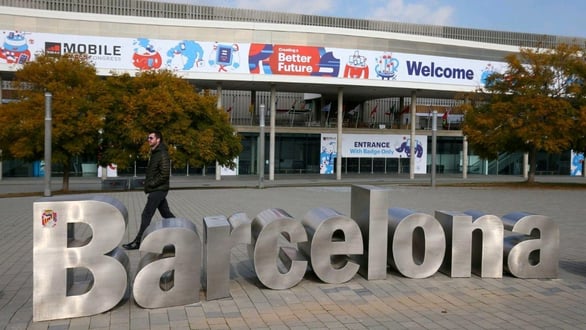At this year’s ESOMAR LATAM Conference in Mexico City, Lightspeed Research and Netquest jointly presented a paper entitled “Is Shopping Cultured? An Exploration into the Global Language of Consumer Decision Making
This paper, presented by Alex Wheatly (Lightspeed Research) and Joaquim
- To determine the suitability of taking a qualitative approach to a quantitative questionnaire.
- To determine this model’s scalability through low-cost automation of
open-ended-question coding. - To compare the relative importance of several variables in the decision to make a purchase in different countries.
The Qualitative Context of a Quantitative Questionnaire
This paper’s methodology was based on another paper, written by Jon Puleston and Alex Wheatley and presented at the 2014 ESOMAR Digital Conference in Stockholm, entitled “Open Your Mind to the Power of Open-Ended Questions". That study provided numerous examples of how the contextual approach, which uses open-ended questions, can yield data that is clearly more significant than data derived from closed, value-structured questions based on the Likert scale.


The study was carried out in seven countries: Mexico, Brazil, Spain, the UK, the USA,
The respondents chose the sentence that came closest to describing their own behavior and then, using open-ended questions, explained their choices.
Figure 1. Word scores compared to rating scores for musical artists
Low-Cost Automation: A Scalable Tool
To conduct this analysis, the authors created “code frames” of logical words and phrases, then searched for them in the data series. They identified word pairings and how frequently those pairings occurred. For the purposes of the analysis, they chose constructions (of
To obtain this translation, the authors plugged their text into Google Translate. In this process, knowledge of the languages used was essential—thanks to the help of proficient English speakers, we were able to confirm that about 30% of the translations were incorrect or had simply been interpreted in a comical way.
 This process led us to conclude that building a scalable tool for a study in several countries is possible, provided that you construct a malleable code frame. However, it also reminded us how important it is to understand the language and culture of the region you are studying.
This process led us to conclude that building a scalable tool for a study in several countries is possible, provided that you construct a malleable code frame. However, it also reminded us how important it is to understand the language and culture of the region you are studying.
We can conclude, then, that automation can only be carried out if it is accompanied by a conscientious review.
Cultural Context Is What Makes the Difference
Now, let’s get to the study’s conclusions on the relative importance of certain variables based on country: we can point out a few differences, but we have to stress that the demand reflects the supply. The more sophisticated the supply, the more sophisticated the demand. In this case, we compared countries whose distribution channels were not at all equal, which meant that consumers’ education about their shopping habits, too, was quite unequal.

The first question was designed to gauge how much importance consumers place on “me” when making a purchase. In this context, the USA and UK came out far ahead of other cultures on the “egocentric” scale: the subject “I” and the phrase “I need it” stood out spectacularly in those countries.
Does that mean that those countries are particularly egocentric?
That’s one possible explanation. However, we realized that in Spanish and Portuguese, the subject pronoun is regularly omitted from the sentence, since the subject can be determined from the conjugation of the verb.
To adjust for this, we normalized the data based on the country. That is, for every country, we relativized the data in each category, then compared that data with other countries’.
This exercise enabled us to glean important insights into the countries studied:
- Purchases in the category of “beer” are considered a special treat in Spain,
Mexico and Singapore, but they are viewed as commonplace in the USA. - Purchasing tea or coffee is also considered an indulgence or a special treat in Brazil and Spain, while in Singapore and India it turns up a negative result, meaning it is viewed as a fully banal purchase.
- Buying deodorant is very important in hot and humid countries like Brazil and
Singapore, but depends more on the circumstances in places like the USA and UK. - Flavor and healthfulness are important in all countries. However, obsession with additives and sugar prevail far more in Brazil and Mexico than elsewhere.
- The convenience of certain foods is noteworthy in the UK,
Singapore and the USA: countries where “food solutions” and “ready-to-eat meals” have already been around for a long while. - In terms of variables related to price, we again find that the supply has a strong impact. In the USA and UK, the concept of “value for your money” is very firmly lodged in consumers’ minds. On the other hand, “simpler” concepts such as “expensive” and “cheap” are what determine purchases in Brazil,
Mexico and Singapore. Spain is particularlyinteresting, since it stands out in both metrics. This relates to Spain’s economic crisis started in 2007 and its impact on consumers and commercial formulas. The communication strategy behind discounts and “soft discounts” is built on highlighting the value you’re getting for your money.
These are a few of the conclusions that suggest that culture does, in fact, have a determining effect on consumer behavior. Taken as a whole, this paper proves that it is possible to carry out qualitative research through quantitative-format questionnaires. With this method, we can start a conversation with consumers, and they can give us more detailed responses without feeling locked into the researcher’s a priori conclusions.
Finally, we can conclude that building a scalable tool based on automated coding is, in fact, possible, provided that it is done within a solid framework and as part of a larger, rigorous process.





